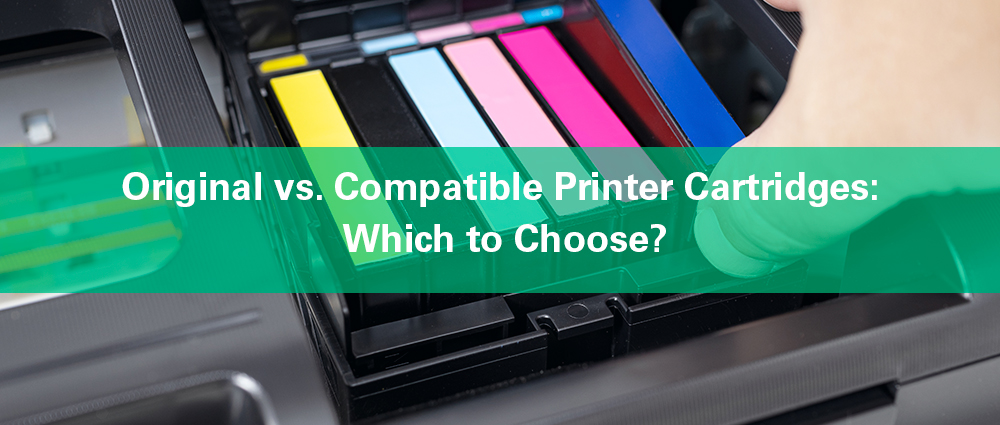Original vs Compatible Toner Cartridges: What You Need to Know
Your office printer needs new toner, but you face a tough choice. Should you buy the expensive original cartridge or try a cheaper compatible option? This decision affects your budget, print quality, and equipment lifespan.
What Are Original Toner Cartridges
Original equipment manufacturer (OEM) cartridges come directly from your printer’s brand. Canon makes Canon cartridges, Konica Minolta produces Konica Minolta toner, and so on. These cartridges undergo extensive testing with specific printer models.
OEM cartridges use the exact toner formulation designed for your machine. The plastic housing, chip technology, and internal components match factory specifications perfectly. Your printer warranty typically covers any issues related to OEM cartridge use.
Understanding Compatible Toner Options
Compatible cartridges are third-party products designed to work with specific printer models. Reputable manufacturers reverse-engineer OEM designs to create functionally similar products. These cartridges contain different toner formulations but aim to deliver comparable results.
Quality varies significantly between compatible cartridge manufacturers. Some produce excellent alternatives while others create subpar products that damage printers or deliver poor results.
 Print Quality Comparison
Print Quality Comparison
Original cartridges consistently deliver the print quality your printer was designed to produce. Colors remain accurate, text appears sharp, and photo reproduction meets manufacturer standards. You get predictable results every time.
High-quality compatible cartridges often match OEM print quality for standard business documents. Text sharpness and basic graphics typically appear identical. However, complex color work, photography, or specialty applications may show slight differences.
Low-quality compatible cartridges can produce streaky prints, faded colors, or inconsistent coverage. These issues become more noticeable with heavy use or demanding print jobs.
Cost Analysis That Matters
Original cartridges typically cost 40-60% more than quality compatible alternatives. For businesses printing thousands of pages monthly, these savings add up quickly. A company spending $2000 annually on OEM cartridges might save $800-1200 switching to compatibles.
However, failed compatible cartridges create hidden costs. Poor cartridges can damage printer components, requiring expensive repairs. Reprinting failed jobs wastes time and materials.
Reliability and Performance Factors
OEM cartridges rarely fail catastrophically. They integrate seamlessly with printer firmware and rarely trigger error messages. Page yields typically match advertised specifications.
Compatible cartridges from established manufacturers offer similar reliability. However, cheaper options may leak toner, fail prematurely, or confuse printer software. Some printers reject compatible cartridges entirely through firmware restrictions.
Making the Right Choice for Your Business
Choose original cartridges when print quality is critical. Law firms, design agencies, and medical offices often require consistent, professional output. The premium price ensures reliable performance and maintains warranty coverage.
Select quality compatible cartridges for high-volume, standard business printing. Internal documents, invoices, and routine correspondence work well with compatibles. Research manufacturers and read reviews before purchasing.
Consider hybrid approaches for different printing needs. Use OEM cartridges for client presentations while choosing compatibles for internal documents.
Smart Purchasing Tips
Buy compatible cartridges from suppliers who offer guarantees and technical support. Avoid unnamed brands or suspiciously cheap options. Test compatible cartridges with small quantities before committing to bulk purchases.
Monitor your printer’s performance regardless of cartridge choice. Replace cartridges showing quality decline immediately. Clean printer components regularly to maintain optimal performance.
Your choice depends on balancing cost savings against quality requirements and reliability needs.

